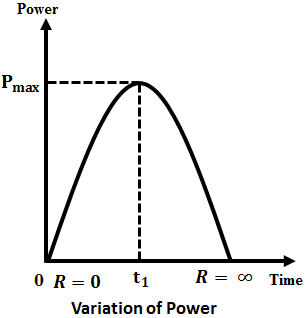When there is a fault in the system, the circuit breaker operates automatically and disconnects the system from fault by separating its current-carrying contacts. During this process, an arc is formed between the contacts and the circuit breaker must extinguish the arc. The arc formed is a type of electric discharge that generates a huge amount of heat energy.
If the arc is not quenched immediately, it may result in an explosion and damage the equipment to be protected. However, the arc extinction is very complicated and the circuit breaker must be capable of extinguishing the arc without getting damaged and making damage to the equipment. There are two theories that give a concept of the phenomenon of arc extinction in circuit breakers. They are,
- Slepian's Theory or Recovery Rate Theory
- Energy Balance Theory.
Slepian's Theory or Recovery Rate Theory :
In circuit breakers, the arc is formed due to the ionization of the gap between its contacts. So, in order to extinguish the arc, the electrons and ions present in the gap are to be removed immediately after the current reaches a natural zero.
Because the ionization will be minimum at current zero instant. The removal of electrons and ions from the gap is possible in either of the two different ways. They are,
- Recombining them into neutral molecules.
- Sweeping them away by inserting a suitable insulating medium into the gap.
The arc is interrupted if the rate of removal of ions from the gap is faster than the rate of ionization in the gap. In other words, if the dielectric strength of the medium between the contacts is increased such that it is always greater than the restriking voltage, the arc does not restrike after the current zero interruption.
As this theory describes the arc extinction process as a rate between dielectric strength and restriking voltage, it is also called Voltage Rate Theory.
The figure below shows, if the dielectric strength builds as in curve-1 when compared with that of the restriking voltage as in curve-2, then the arc will be extinguished. Since the dielectric strength builds more rapidly than the restriking voltage.
If the dielectric strength builds as in curve-3, the arc restrikes. Since the restriking voltage rises more rapidly than the dielectric strength due to which the ionization persists and the breakdown of the gap occurs.
Limitations of Slepian's Theory :
- In this theory, the restriking voltage and rate of rising of dielectric strength are assumed as comparable quantities but in actuality, this is wrong as the two quantities are not similar.
- In this theory, the energy relation in the arc extinction is not considered.
- This theory is incomplete, as the concept of arcing phase is not covered.
- The assumption of restriking voltage and increase in dielectric strength as independent quantities is not acceptable, as the dielectric strength calculations and observation values do not match.
Energy Balance Theory :
This theory is also known as Cassie's theory. The following assumptions are made in the theory,- The arc is composed of a cylindrical column, which has a constant temperature at its cross-section. There is a uniform distribution of energy in this column.
- There will be no change in temperature.
- In order to accommodate the arc current, the cross-section of the arc adjust itself.
- The power dissipation and the cross-sectional area of the arc column are proportional to each other.
This theory explains, how the arc is extinguished or restrict i.e. when the rate of heat removal between the contacts is lower than the rate at which the heat is generated, then the arc will restrike. When the rate of generation of heat between the contacts is lower than the rate of removal of heat, then the arc will be extinguished.
The generation of heat depends upon the separation of contacts. At the current zero instant, the restriking voltage will be zero and hence the power will be zero. At the next instant, the gap between the contacts contains some ions. Therefore, the gap will have finite post-zero resistance.
As the restriking voltage exists its associated current and power will have some finite value. At the instant of final arc extinction, as no ions are present in the gap, its resistance will be infinite so, the power will be zero. Hence in between the instants of current zero and final arc extinction, the power increases to a maximum value at an instant, t1 and from there it falls back to zero as shown below.
As the power exists in the gap for a finite duration of time energy appears in the gap in the form of heat. So, the circuit breaker has to remove the heat generated by suitable means.


